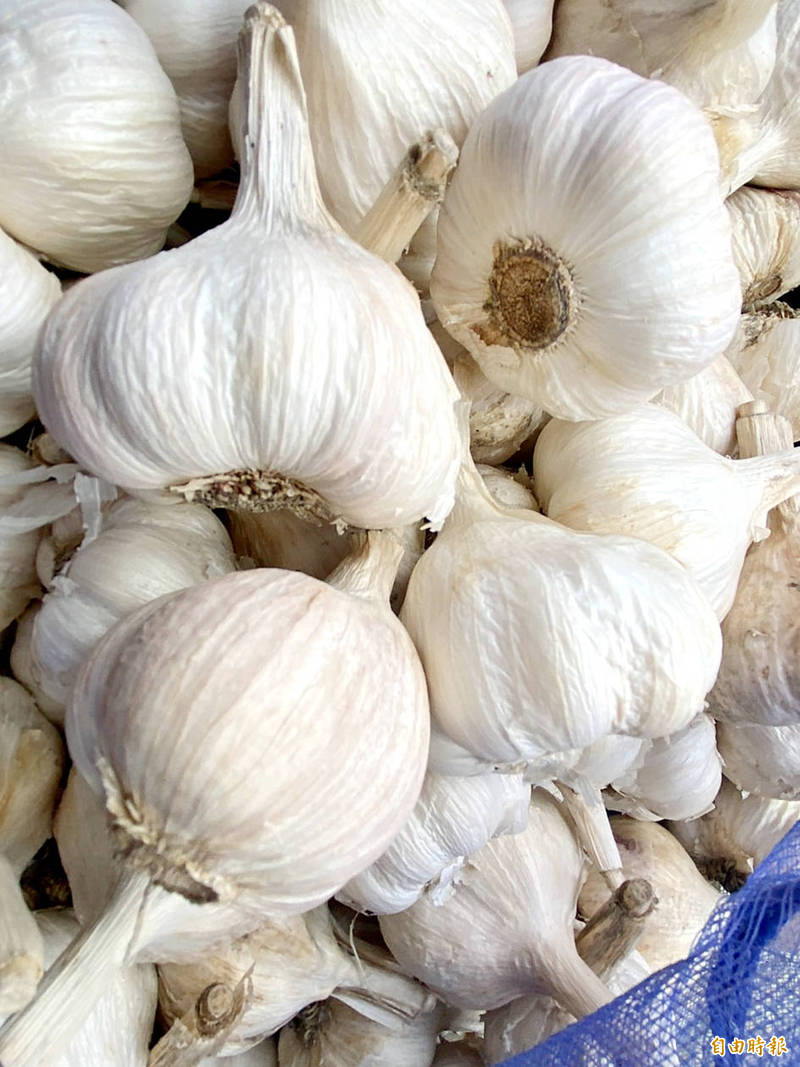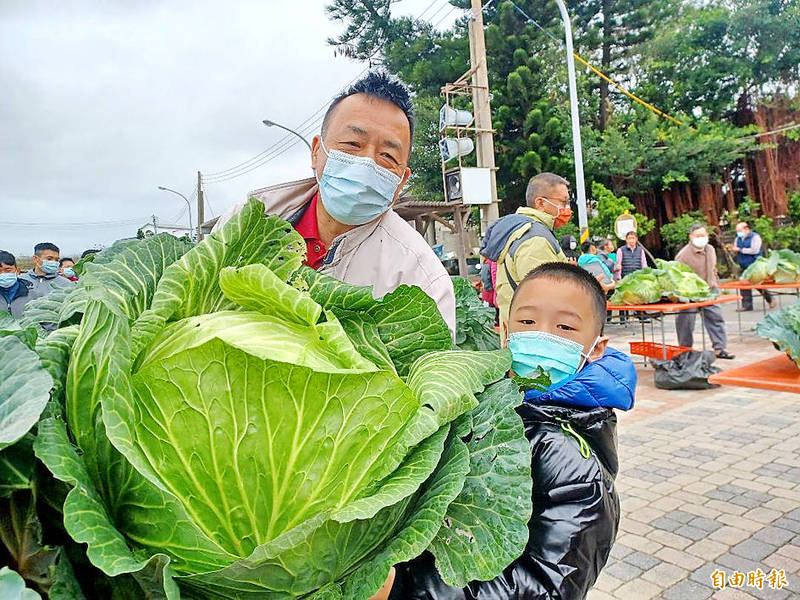《TAIPEI TIMES》 Taiwanese cabbage nation’s favorite vegetable; raw garlic least popular

Heads of garlic are pictured in Yunlin County on May 24 last year. Photo: Chan Shih-hung, Taipei Times
By Chiu Chih-ju / Staff reporter
The nation’s favorite vegetables are Taiwanese cabbage, yam leaves and bok choy, while raw garlic is the least popular, a poll showed.
Results of the “Stars of Taiwanese dishes and cooking” online poll was released in Taipei on Wednesday. The survey, which collected opinions on the six major food categories, was organized by the Taiwan Millennium Health Foundation, the Health Promotion Administration (HPA) and the Council of Agriculture.
Taiwan’s most popular fruits were bananas, dragon fruit and Asian pear; while tofu, salmon and eggs topped the list in the “Meat, Fish, Eggs and Legumes” category.
White rice, noodles and multi-grain rice topped the “Cereals and Whole Grains” category, while the “Dairy Products” category was led by milk, followed by yogurt drinks and yogurt.
The favorites in the “Nuts” category were walnut, pine nut and pistachio.
Garlic was the least favorite in the “Vegetables” group, followed by brown-cap white mushrooms (Hypsizygus marmoreus) and Okinawa spinach, while Durian was the least popular fruit.
Fried dough sticks (youtiao, 油條), mock ham, evaporated milk and flaxseed were the least favorite foods in the “Cereals and Whole Grains,” “Meat, Fish, Eggs and Legumes,” “Dairy Products,” and “Nuts” categories respectively.
The survey collected responses from 172,000 people. Respondents in the 30-to-39 age bracket made up the largest group, accounting for 34.2 percent of all respondents, followed by the 40-to-49 age bracket.
Pan Wen-han (潘文涵), a researcher at Academia Sinica’s Institute of Biomedical Sciences, said garlic was the least popular vegetable because Taiwanese do not like eating it raw, as it is usually sliced and sauteed to lend its aromatic flavor to Taiwanese dishes.
Most Taiwanese still prefer eating white rice and noodles, but they should consume more whole rice and multigrains, which can protect from cardiovascular disease, Pan said.
Pan said people should limit consumption of deep-sea fish to twice a week, due to possible high heavy metal content, which could affect coagulation and other blood functions.
People should check the glycemic index of fruits, Pan said, adding that, for example, banana is among the favorites in the poll, but elderly or diabetic people should for not eat too much of the fruit in one sitting.
“Studies in other countries have shown that vitamin D deficiency could increase the risk of COVID-19 infection by 77 percent, which is likely due to enhanced immunity gained from vitamin D and of its function to diminish inflammation in the body,” she said. “Drying mushrooms under the sun can boost their vitamin D levels. So people can boost vitamin D intake by eating more sun-dried mushrooms and fungus.”
Taiwan Millennium Health Foundation chairman Hsu Huei-heng (許惠恒), an expert in diabetes treatment, said the poll provides opportunities for public nutrition awareness, for example by introducing people to the six major food groups, and presenting charts and graphics to educate the public on daily recommended allowances.
Poll results, alongside data from the HPA, could help people create daily meal plans, for example two portions of dairy products, three portions of vegetables and two portions of fruit, and more whole grains to remain healthy and protect against metabolic syndromes, Hsu said.
HPA Director Wu Chao-chun (吳昭軍) said people should consume a variety of food products to maintain proper nutrient intake, which is necessary for a healthy body, as the nation faces a surge in COVID-19 infections.
Additional reporting by Jason Pan
新聞來源:TAIPEI TIMES

A recent poll reveals that the nation’s favorite vegetable is Taiwanese cabbage. The photo shows a giant cabbage cultivated and reaped by farmers in Wukan Village Penghu County in April. Photo: Liu Yu-ching, Liberty Times
















